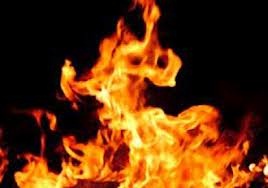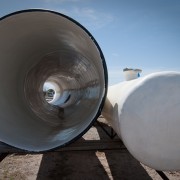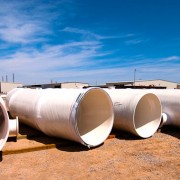Is FRP Combustible?
 Fiber Reinforced Polymers (FRP) and Combustion
Fiber Reinforced Polymers (FRP) and Combustion
Combustion/fire is a serious concern regardless of the industry. Fire resistant composites are essential for numerous applications including construction materials, structural heat resistant barriers, fire proofing, and generally speaking, improved thermal stability.
Heat Resistant Phenol Resins
One remarkable advantage of using custom Fiberglass Reinforced Polymers (FRP) is that they can be designed, formulated and manufactured per your requirements. When discussing combustion, heat, or fire resistance, in terms of FRP, it is important to consider composition of laminates, resins, and enhancements such as fillers, additives, and modifiers.
Enhancement of Phenol Resin Matrices
In some cases, resins matrices may be enhanced with the addition of fillers, additives and modifiers to demonstrate improved heat resistance. There are specially filled resins which exhibit fire retardance features to insulate and protect structures from jet fires or extreme temperatures from nitro combustion (burning of film materials).
The advantages of FRP laminates in case of combustion or heat:
- No auto-propagation of flame
- Very low smoke development
- Very low toxic fume emission
- Low heat release
- No release of flammable vapors
- Very low loss of strength at high operating temperatures up to 200 ºC
- Low thermal conductivity
Fillers, Additives, and Modifiers
Many of the enhanced qualities, such as heat resistance, are the result unique material formulations, for example, using fillers, additives and modifiers in the manufacturing process. Similarly, it has been demonstrated that stabilizers can help to mitigate the effects of prolonged exposure to heat, and are an essential ingredient when creating durable heat resistant FRP.
Hydration Fillers
Included in this category are materials containing ATH (alumina trihydrate), bromine, chlorine, borate, and phosphorus. The filler alumina tri-hydrate is frequently used in this application because it gives off water when exposed to high temperatures thereby reducing flame spread and development of smoke. Another common hydration filler used for fire resistance throughout the fiberglass industry is calcium sulfate.
Stabilizers
Simply put, heat stabilizers are additives that protect or reduce the effects of heat or radiation on plastics or polymers. In some cases, heat stabilizers are used in thermoplastic systems to inhibit polymer degradation that results from exposure to heat. The effectiveness of the stabilizers against weathering (heat degradation, UV radiation etc.) depends on solubility, ability to stabilize in different polymer matrices, the distribution in matrices, and evaporation loss during processing and use.
Heat stabilizers are mainly used for construction products made of polyvinyl chloride, for instance window profiles, pipes and cable ducts. However, it is also important in the manufacturing of FRP and the uses/applications are potentially limitless.
Composite Expertise
With our composite expertise and precision manufacturing capabilities, we are prepared to help you with your high-temperature composite needs.













